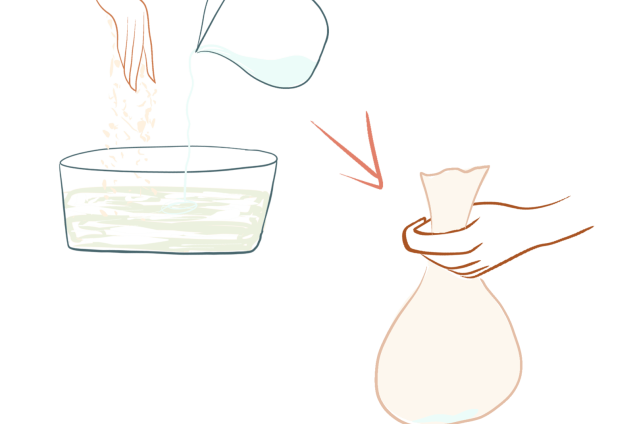What is Tapioca?
Cassava
(rich in iron, calcium and vitamin C)
Known by various names, Cassava in English or Yuca in Spanish.
The term cassava comes from the word manioc, which originally came from the Brazilian Atlantic coast spread Tupi language .Crepe, crumbly pancake or some kind of flatbread? We call it Tapioca in Brazil (tapi(bread) + oca(house)).
Tapioca, like so many other recipes using cassava, is a cultural heritage from the Brazilian indigenous people and a staple of northeastern Brazil. The superfood is a unique blend of exotic culture and differentiated taste.
In combination with a delicious filling, our Tapioca can be eaten as a main meal, dessert or as a quick, tasty and healthy snack.
THE PROCESS

Planting
No Cassava, no Tapioca Flour. Between planting and harvesting cassava it takes 12 to 18 months of sunshine, rain dancing and lots of love.

PROCESS
Now let's understand what goma de tapioca is! The cassava is peeled and crushed, to become ready for grinding.

DEHYDRATION
We squeeze it to release a “milk” that will be going through a dehydration process, to rise into cassava starch.
That's where we come in
WATERING & COLORING NATURALLY
Our hands fill the cassava starch with water, love and patience. The hydration process with filtered water needs 24hours to rest, after that, this mix needs to dry, to make the goma de tapaioca sprout. It is also at this stage that instead of water, the tapioca gains colour, with the juice of beetroot, spinach, turmeric or blue spirulina.


PREPARATION & PACKAGING
To finish, we pass the clods in a large steel sieve and drizzle in a bowl to get a very fine tapioca flour.
DELIVERED TO YOUR DOOR!
Our fresh Tapioca flour is ready and will soon make it to your door and kitchen!
Learn about the origins of the Tapioca
Indigenous food that became fitness delicacy
Tapioca is so common in our coast and areas of the Agreste region, is one of the indigenous dishes absorbed in the cuisine of European settlers in northeastern Brazil where tapioca was served as a good substitute for the lack of wheat for the dough. The idea of tapioca, as we know it today, came from the city of Olinda, where the beiju, flour and tapioca (goma) extracted from cassava were consumed intensely since the sixteenth century with the Portuguese creation of the Flour House in Itamaracá.
Among the Indigenous, the preference was for beiju, but tapioca soon spread among indigenous brazilians, such as the Cariris in Ceará and the Jês, in the eastern Amazon, and also later became the basis of the slave feeding in Brazil. All this transformed tapioca, today, into one of the most traditional symbols of cuisine throughout almost the entire North and Northeast.
Physical sports practitioners and dieticians have recently recognized tapioca as a food that can control daily calorie intake on a restrictive diet.



